Once every generation or so, an athlete comes along that changes the landscape of their sport and, quite often, the sporting world at large. Michael Jordan was one such athlete. Over the course of his career, Jordan’s dominance on the court translated into a newfound international celebrity that reached levels akin to Beatlemania. Now, an entirely new generation is being exposed to Jordan’s legacy through the movie Air (starring Matt Damon, Viola Davis, and Ben Affleck), which tells the story of how Nike revolutionized the shoe industry with an unprecedented endorsement deal and a new line of footwear.
In 1982, Michael Jordan led the University of North Carolina men’s basketball team to its first ever NCAA Championship. His star was on the rise when he entered the NBA draft in 1984 where the Chicago Bulls selected him third overall. But before he ever stepped foot onto an NBA court, Jordan made history when he became the first NBA player to sign a $2.5 million dollar endorsement deal with a shoe company that agreed to create a product exclusively for him. However, when Nike created their first edition of the now ubiquitous Air Jordan, it did not meet the NBA league policy of being made from 51% white materials. The decision to deliberately ignore the NBA rule about color on shoes was groundbreaking and it helped develop an iconic brand that resonated with the young and made Jordan into a millionaire many times over.
The Nike story actually begins well before Jordan, however. It began when legendary Oregon track and field coach, and co-founder of Nike, Bill Bowerman began trying to make a better track shoe. In 1948, Bill Bowerman moved his family to Eugene where he took the head coaching job for the track and field team at his alma mater, The University of Oregon. Bowerman led the team to 24 NCAA individual titles and four NCAA team titles over the course of his career, not to mention his contributions to the US Olympic Track program. But Bowerman’s greatest achievement, the one that brought him fame and fortune, began when he shook the hand of Phil Knight, one of his former milers. Together, they created a footwear distribution company originally called Blue Ribbon Sports. It began at the nexus of need and ingenuity.
The “eureka moment” occurred in Bowerman’s own kitchen as he watched his wife make waffles one morning and wondered if he could use a waffle iron to craft a rubber sole that would cushion a runner’s foot and give it extra spring. Bowerman took his wife’s waffle iron into his workshop after breakfast and began experimenting. The shoe with a waffle iron sole came to be called the Nike Cortez and, by 1968, it became a top seller. Bowerman’s moment of insight revolutionized athletic footwear forever. And now, one of the first pair of shoes Bowerman ever made on that waffle iron is at The Stark Center.
This amazing gift was made by Bill (William) Freeman who was given the shoes by Coach Bowerman over a half century ago. Freeman coached track and field athletes from middle school through international levels, including dozens of qualifiers for the US Olympic Trials, and he has spent decades of years teaching at public and private colleges. Freeman and Bowerman were friends and co-authored several track and field training books. Last month, Freeman gave a presentation at the 2023 North American Society for Sport History conference titled “Bill Bowerman of Oregon: The Impact of a Life.” He brought his hand-made Bowerman shoes with him, so that he could show them to the audience. After his lecture, Freeman graciously gifted the shoes to Stark Center director Jan Todd, so that they can be preserved here at The Stark Center.
The shoes, according to Freeman, were loaned to a number of different runners in the early years. They are size 9.5 and were made in the summer of 1973. In an email to Jan Todd, Freeman explained that the tops with the distinctive Nike swoosh were manufactured in a factory, but “the soles were cast, cut & glued in Bowerman’s kitchen.” Freeman went on to say, “one of my runners . . . ran a 29:59 6-mile on cinders in them.”
The soles of Bill Freeman’s shoes are a history lesson in the story of Nike and the development of running technology. The first layer of the sole is black linoleum that Bowerman carved to make the proper shape. The edges are not totally smooth, the knife’s cuts are not totally regular. And, most interestingly, the sole is in two pieces since the hard linoleum did not flex enough. The heel is a separate piece. Glued on top is the gum rubber, waffled sole. Gum rubber is natural rubber without anything added to it. Tan in color, each one had to be cut to shape by Bowerman, who then glued it to the linoleum and pressed them tight. Looking at them provides viewers with a rare opportunity to see Bowerman’s early ingenuity and sport history firsthand.
The historical significance of these ground-breaking track shoes (yes, I said it) and the role they would come to play in the building of a shoe empire as they paved the road (yep, said it again) for future stars and generations to come, make it an honor to display them at The Stark Center. We are deeply grateful to Bill Freeman for sharing this amazing and significant artifact with The Stark Center so that they can be preserved and shared with future generations.


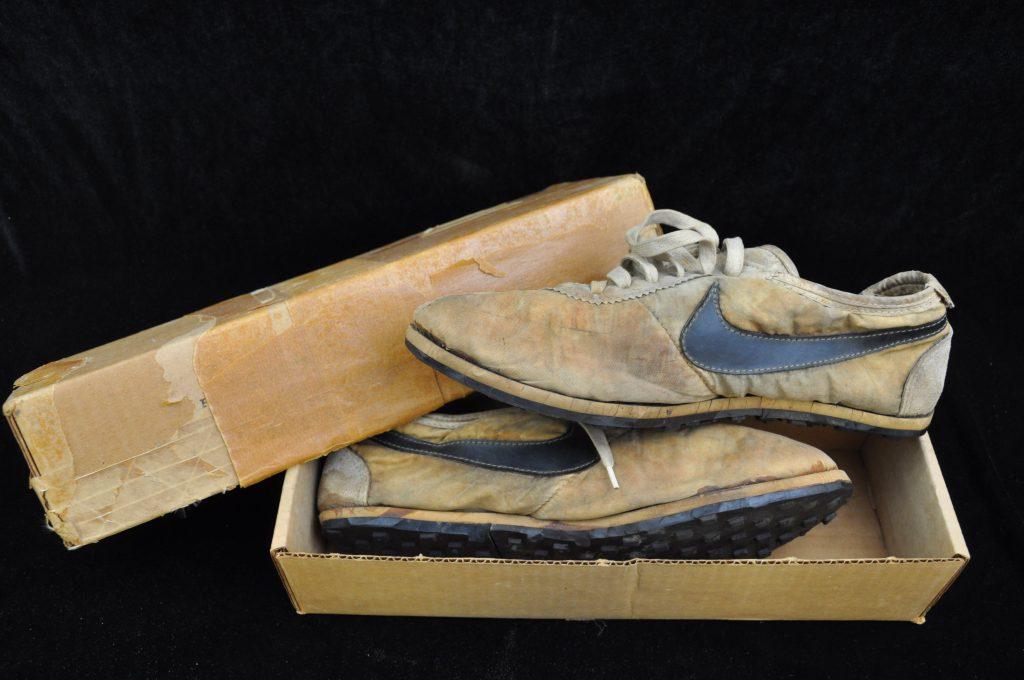
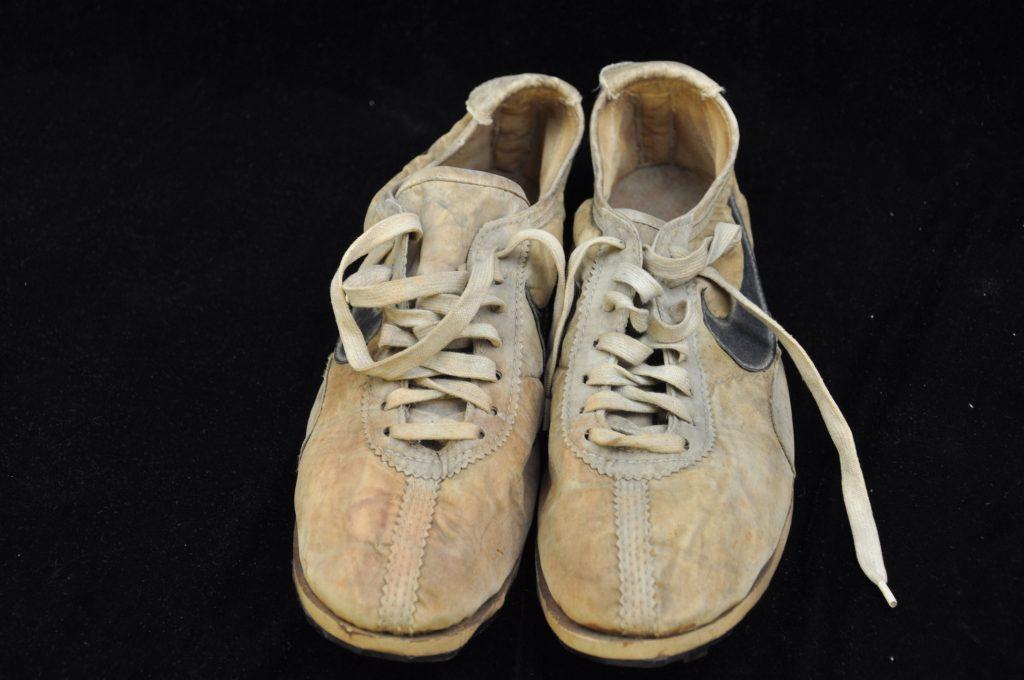
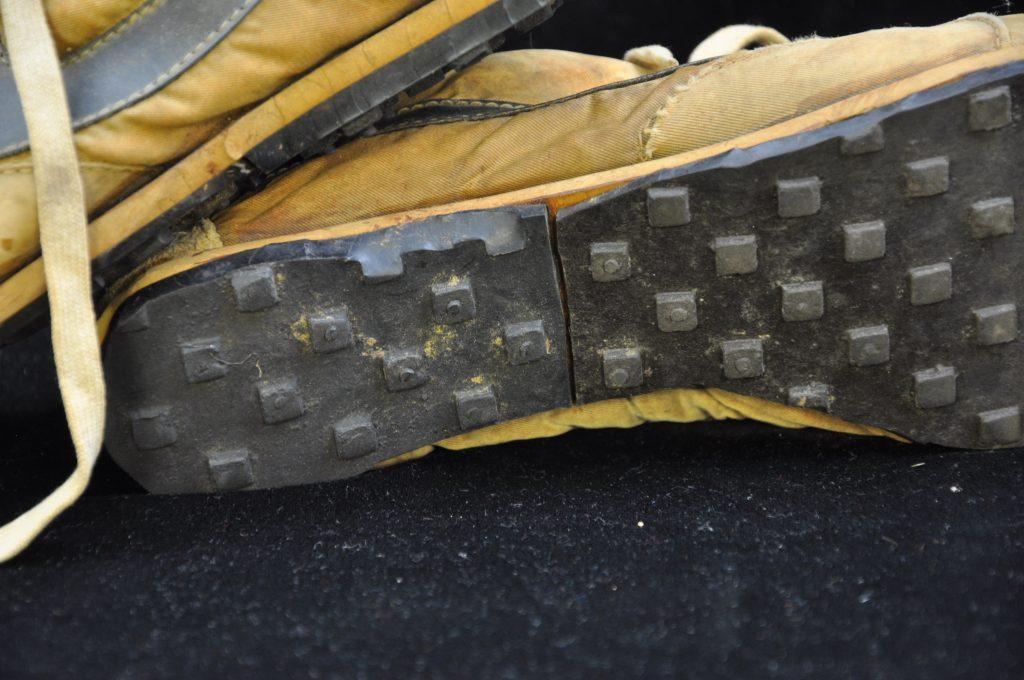
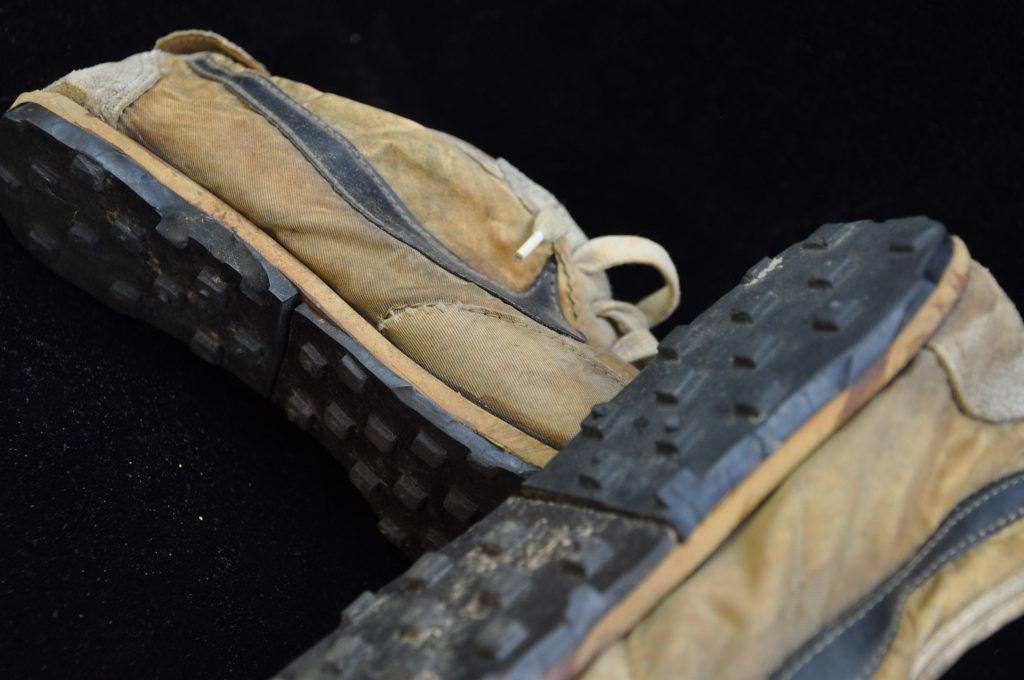
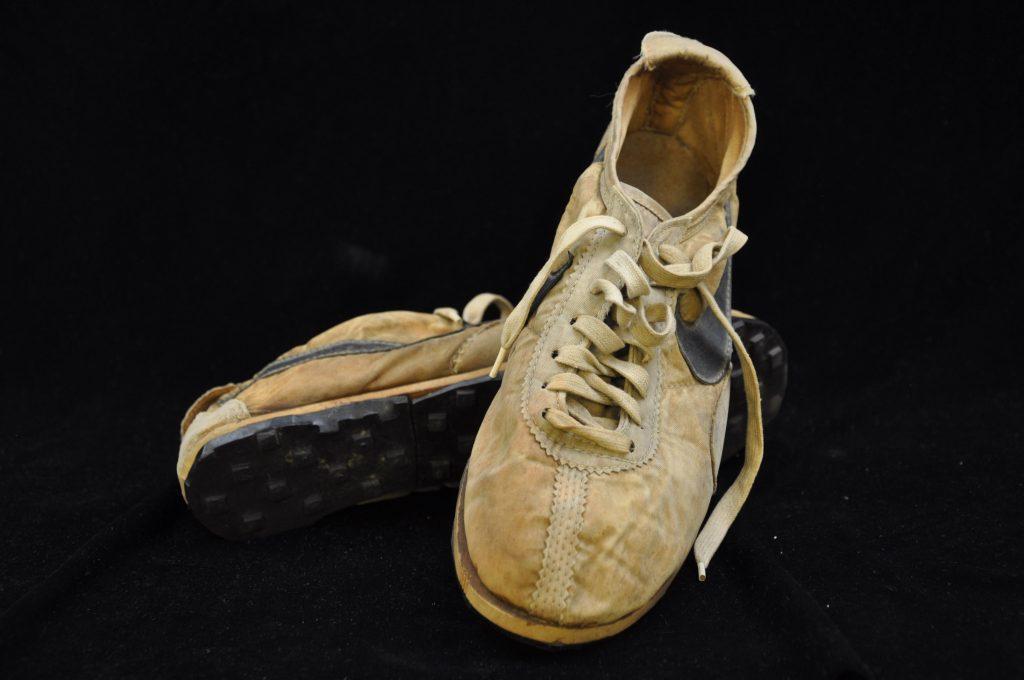
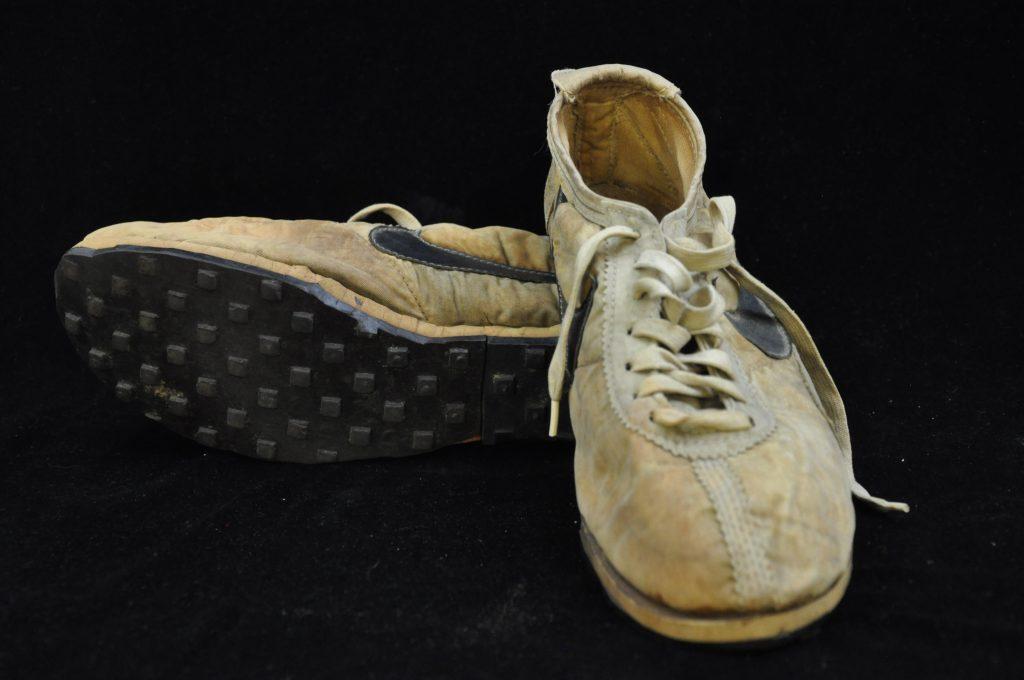

Leave a Reply